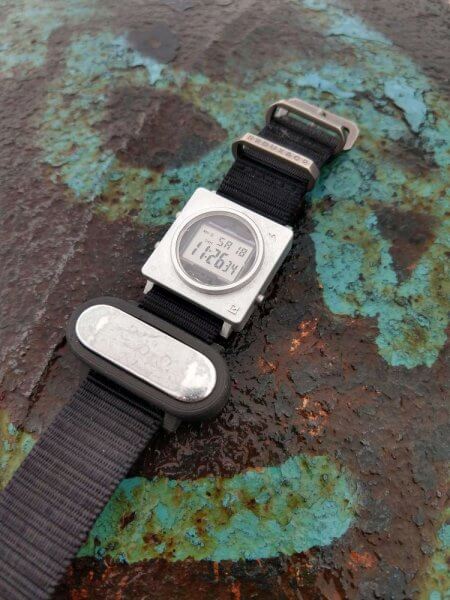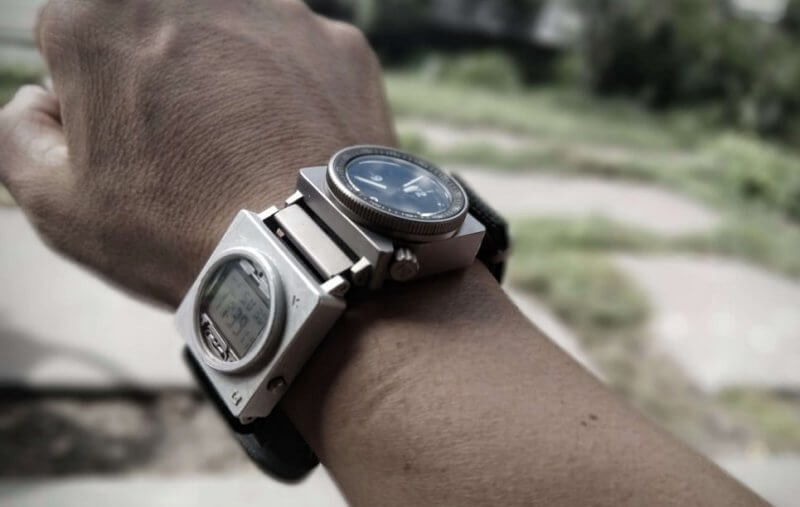
One of our new designs in the works is named SCOUT. The SCOUT design includes three modules: Analog, digital, and compass. They could be connected or used with other main watches.
The SCOUT design is inspired by the Seiko Field Master #1421-0140 (aka Contra) circa 1980.
It’s also inspired by my saddest day as a watch collector. That was the day my digital module went MIA — popped out of the Seiko Contra case during my bike ride home.
On that day, my weather app alerted me that a thunderstorm was poised to devastate my commute home. So, I decided to race it home.
The storm beat me and pummeled me with rain and wind. When I got home and started getting changed into dry clothing I looked down at my wrist. I had worn my Seiko Contra that day.
The digital module was gone.
The design was meant for quick swaps between digital or compass modules. You’d snap the module into place held by a thin wire. Then you’d screw down a crown that secured the module.
However, the crown was prone to loosen on its own. Even worse, the wire could only take so much impact before it’d accidentally eject the module.
I rode back and forth in the downpour scouring each and every inch between my office and home. Climbed up and down 16 flights of stairs. Checked lost and found.
It was gone. For weeks after I would retrace every commuting inch, hoping it might appear. Never did.
Indomitable
I vowed to recreate the design and make it indomitable one day. My design would never eject a module mid-mission and go AWOL.
I’ve been wanting to try some on-shoring manufacturing options, and this was the perfect time and project to try.
I was looking specifically to find a digital module that would fit into a minimal space for the overall project idea. I sourced a Casio after a bit of digging around.
Easy. Design a quick case and then pop in the digital module. I figured it would be pretty straightforward. (Oops!)
I really respect Casio watches — the modules are nigh indestructible. One of my first watches was a Casio.
And now Scout’s first watch is a Casio as well. This design is also meant to double up as a starter watch to equip smaller (but mighty) humans.
But there’s a few things that irk me about Casio cases and what I’m doing about them:
- Can’t stand the plastic cases. I know people wax eloquent about these, but meh.
Definitely in need of a titanium upgrade. - Horrid text all over the dial — the word-mash kills me. I understand buttons can be confusing.
Just use them. You’ll get used to them. - Acrylic crystal that scratches if you look at it wrong.
I’ll install a sapphire crystal. - The most glaring problem is that many of the smaller Casios are marked “water resist” — rated for hand washing, “sweat,” and a sprinkle of rain.
I’ll upgrade the case/gaskets to true water resistance, i.e. swimming in the ocean, diving into the pool etc.
The functions I wanted in this module:
- Hourly beep
- Alarm
- Light
- Date
- 24hr time
- Stopwatch
- Small enough to fit inside a 28mm case
- Long battery life 5+ years (I hate charging things often.)
The Casio mod. 3284 hit the spot — plus it boasts an admirable 7+ year battery life.
Based on my designs and specs, an engineer/industrial designer worked up some files for 3D print. I wanted to upcycle as much of the existing case components as we could for use in the new case.
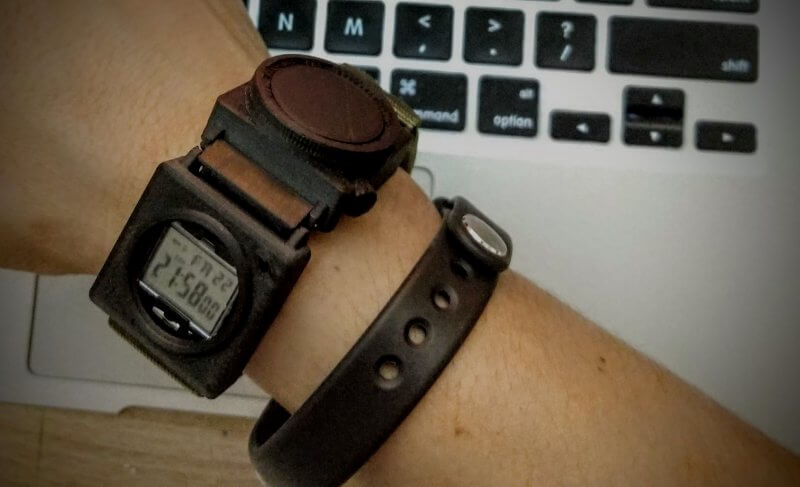
I made over 20 3D printed prototypes to get the sizing and spacing just right. In addition to the movement, I wanted to use the case back and buttons.
What the BEEP
When I opened the watch up and first installed the movement into the first prototype case, I was puzzled to find I had lost the beep.
As I looked more closely at the parts, I realized that Casio had made an interesting space-saving and engineering decision. They glued the electric-piezo element directly to the back of the metal Casio case.
The movement has a spring and a separate metal prong that create a circuit directly with the piezo element and case back.
I have no idea what adhesive they used, but it would not come off cleanly without cracking the element. When I heated it, it would burn the element.
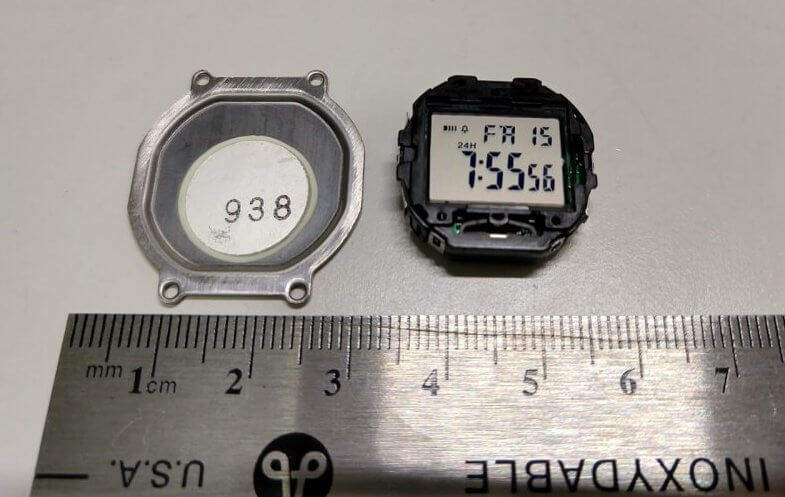
I hacked at the case back with my Dremel to cut it down to fit the prototype. However, it was cumbersome and wouldn’t provide a water resistant seal because Casio made it an odd shape.
So, I had to research and test piezo elements to see if I could find the elusive beep and somehow engineer it back. Finally, I found a solid replacement after some trial and error.
Pushing My Buttons
The buttons were another puzzle. The main challenge with those is that Casio installed them at a slight angle.
Instead, I wanted to install them straight on. That’s because the buttons would be difficult to push and would look oddly angled in the new case design.
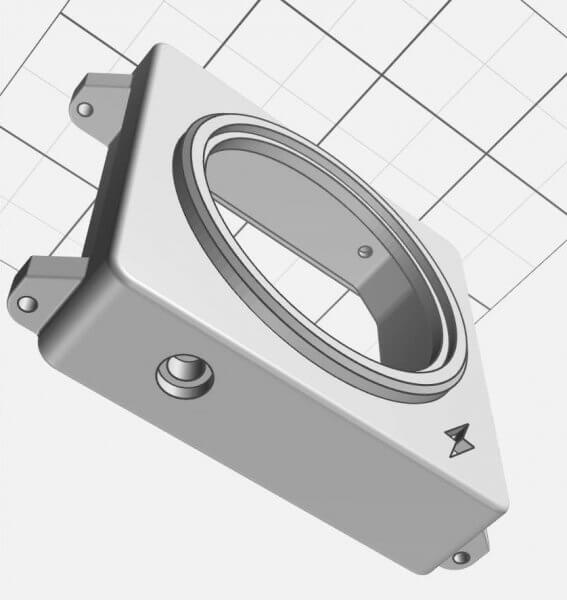
In the end, I had to shift the button position and also create a way to extend the buttons further into the case to work while still maintaining the spacing and tolerances for the gasket and retainer clip.
Can’t Go Black
Casio also makes a reversed display with blackout background and lighter numbers, which I was very excited about. I thought this would increase visibility and be more consistent with the black dials on our standard analog watches.
However, I was surprised to find that the reversed display counter-intuitively DECREASED visibility at certain angles. When looking straight on, the contrast is nice and stark.
But when viewed from the side, I almost couldn’t read it. Especially in more low light conditions. In the end, the original display provided much higher contrast from all directions.
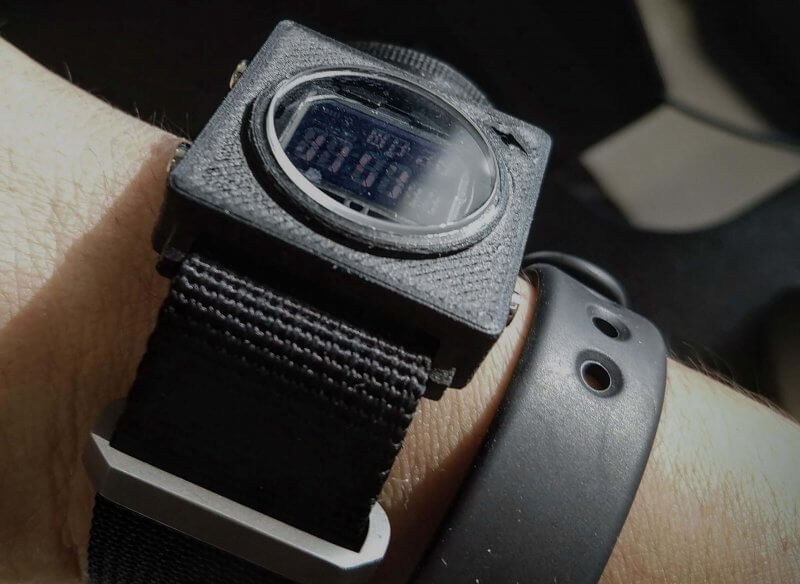
A Time to Cut Metal
I definitely could have kept tweaking the case to get even closer to what will become the final designs. I’m kind of OCD like that.
But at some point, you have to take that step of calculated risk and cut some metal.
I initially considered 3D printing metal prototype cases, but I have not been very happy with the finish from previous titanium prints. It’s got an interesting granular texture, but it’s very annoying to finish (at least in my apartment).
The case would also require tight tolerances. I didn’t want to mess with that.
I’ve always wanted to try on-shore CNC for prototypes (and manufacturing in general), so I decided the first metal prototype would be in aluminum for a few reasons:
- The cost of one-off prototypes is prohibitive because the titanium would have cost 3x aluminum.
- I still wasn’t exactly certain that the specs and measurements that worked in 3D printed PLA would translate fully to metal.
- Aluminum is soft enough that if the measurements could possibly be tweaked a bit, I might reasonably work that out myself without too much headache.
I’m very pleased with the outcome. There are some more minor adjustments that need to be made, but we’re very close.
